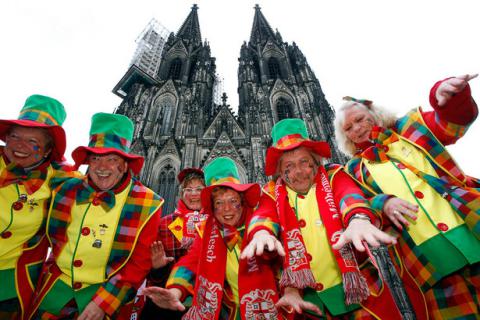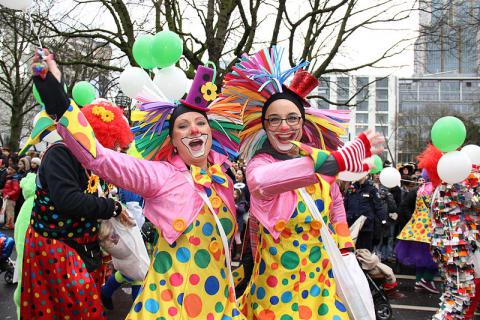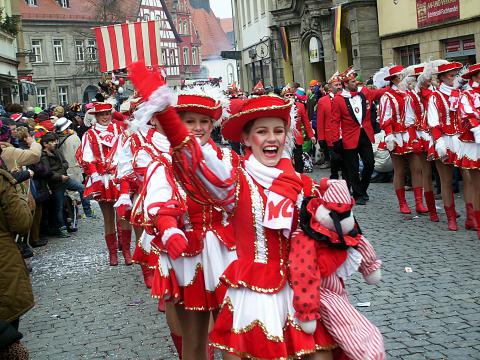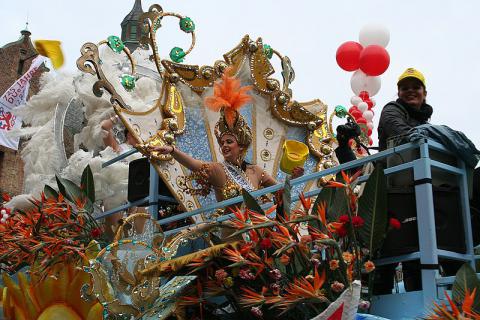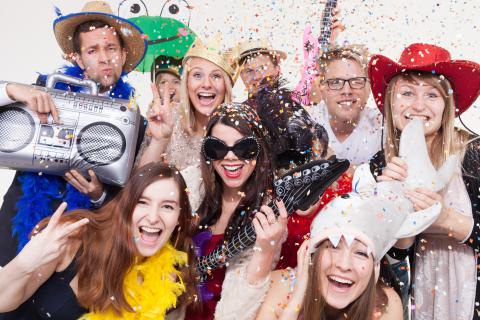Germany has many traditions and customs, but none is as colourful and cheerful as the Carnival. However, Carnival is not celebrated in all regions and cities of Germany. It almost seems as if the hustle and bustle and the associated costumes split the nation into two camps. While some avoid everything and everyone around the topic, the others plan their costumes months in advance and prepare right down to the detail for the Carnival, and to become part of the greater whole and to celebrate.
The 5th season, as Carnival often called, starts traditionally on 11.11. at 11:11 o’clock and ends with the beginning of Lent, which starts with the “Aschermittwoch”. The famous street carnival begins with the "Altweiberfastnacht", the "schmotzigen Donnerstag" or the "Wieverfastelovend", in which the women storm the town halls, cut the shoelaces or the neckties of the men. Various parades and parties in pubs and discotheques sweeten the weekend for the “Jecken” or “Narren” (a term for dressed people at the Carnival) and unite young and old. The “Rosenmontag” with its large parades, is the final highlight of the street carnival. When the lovingly designed carriages wander the streets, the “Gardetänzer” (dancers) perform their choreographies and the royal couple (“Prinzenpaar”) shows themselves to the “Jecken”, it is time to take a bag and go out on the streets to gather sweets and goodies. Probably the largest Rosenmontag parade can be seen in Cologne with over 100 cars and 10,000 participants, closely followed by Düsseldorf.
In the period between 11.11 and the Altweiberfastnacht, the carnivalists are preparing for the great processions, the newly crowned royal couple attends various events and meetings, carnival clubs organize their own large meetings and honour important people with special carnival orders, dancers perform their rehearsed choreographies and bands and comedians, as well as the so-called “Büttenredner”, entertain the guests with all sorts of music and fun speeches. A look behind the scenes is worthwhile and brings a lot of fun for all carnival enthusiasts.
The costumes need creativity - the biggest carnival fans spend months tailoring their own costume. Others buy them in the shop around the corner or borrow one. The countless specialty shops leave no desires unfulfilled. Particularly popular are costumes from well-known series and films, political figures, mythical creatures and of course the 70s and 80s.The fancier and more noticeable, the better! When choosing a costume however, "Every Jeck should choose a costume that does not scare other people" (Hans-Peter Such and from the Düsseldorfer Carneval committee),because it is a festival, dedicated on spreading fun and joy , not fear.
Although the actual process of festivities is the same, all cities have their own traditions and customs:

 Unser Partner für Gesundheit
Unser Partner für Gesundheit